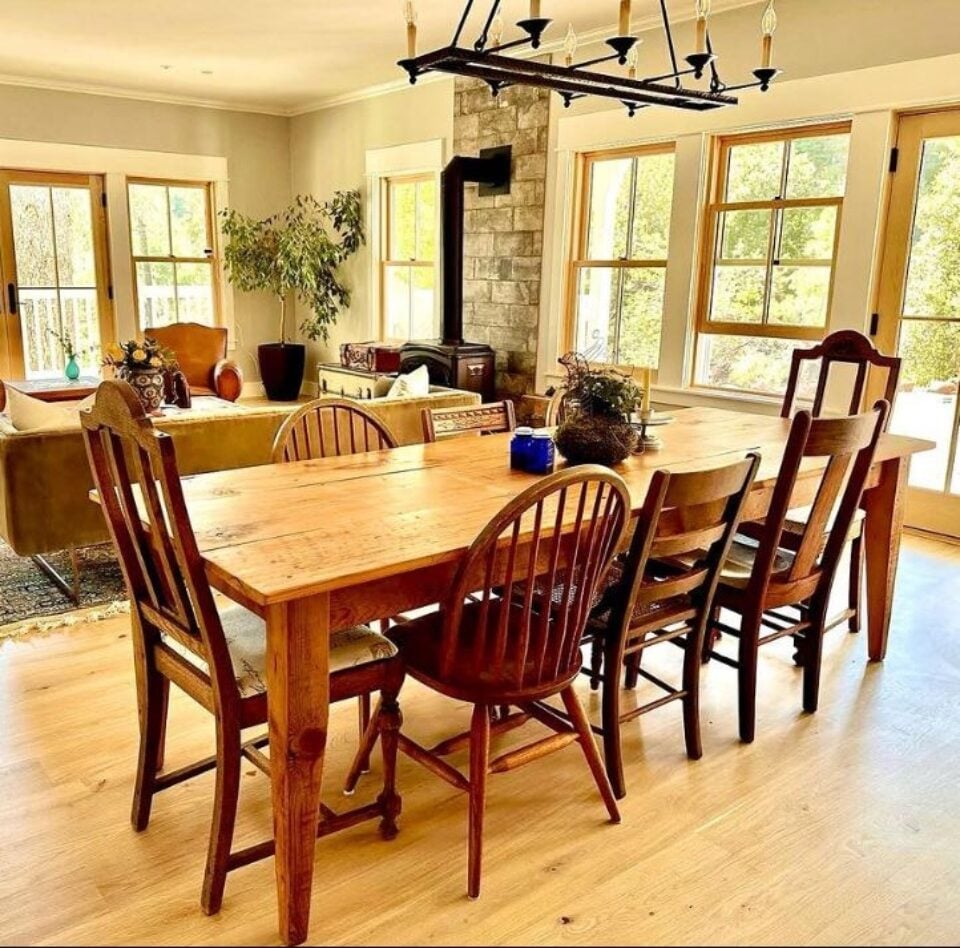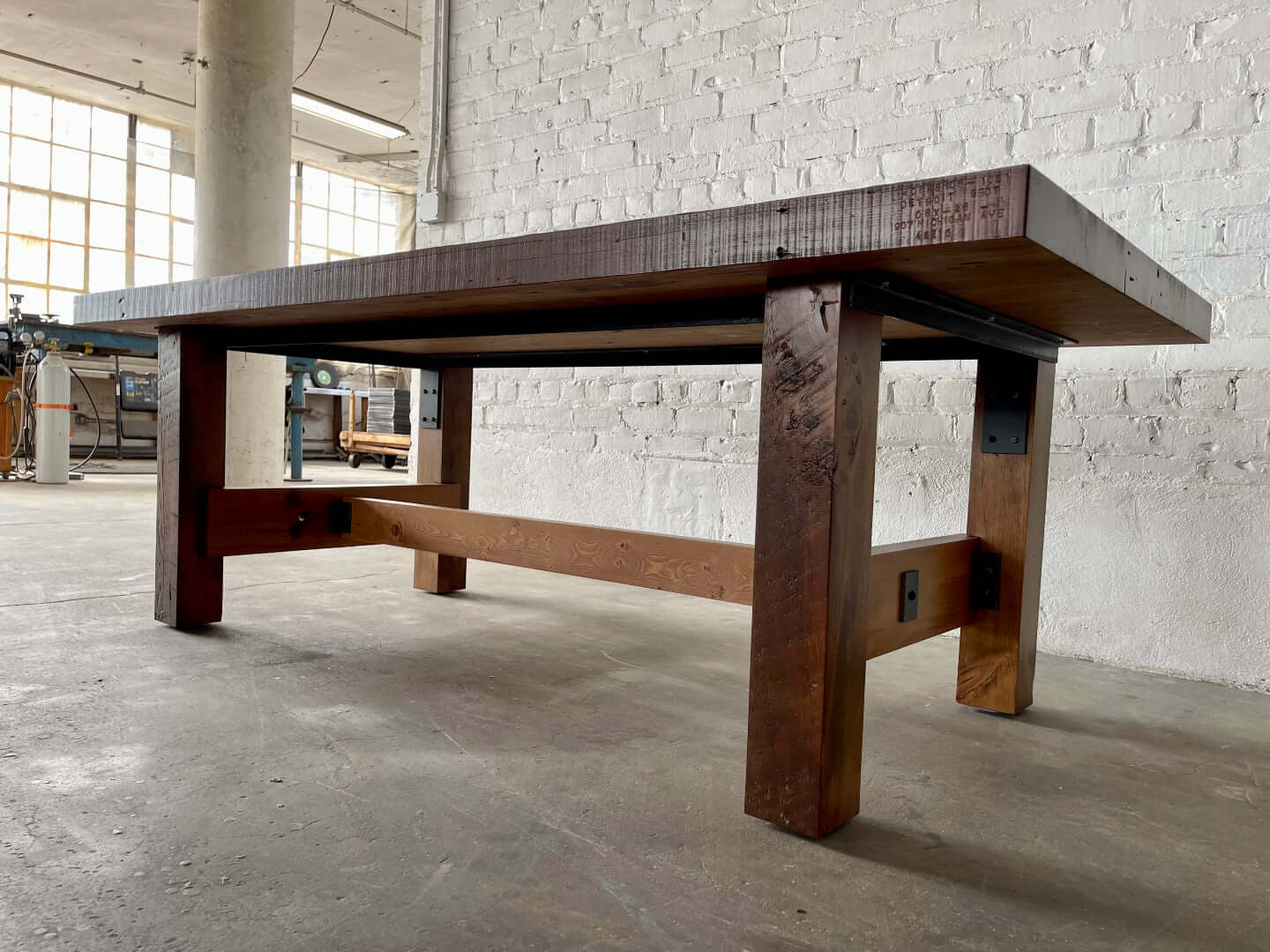Include Toughness and Charm Using Solid Dining Table Legs Wood Pieces
Trick Factors to Keep in Mind for Dining Table Legs Timber Choices
When choosing wood for dining table legs, several important variables necessitate careful factor to consider to make sure both functionality and visual appeal. The selection of timber type, characterized by its toughness and distinct grain patterns, plays an essential function in the general style and long life of the piece. Furthermore, one have to consider maintenance needs and the environmental ramifications of sourcing products. As these aspects link, they dramatically influence the last result of your table. Comprehending the nuances of each variable can be intricate, leading to essential choices that warrant more exploration.
Timber Types and Characteristics
When choosing wood for dining table legs, it is crucial to comprehend the distinct features of various wood types. Different timbers provide distinct benefits and drawbacks, influencing both the sturdiness and visual appeal of the ended up item.
Hardwoods, such as oak, cherry, and maple, are frequently liked for their toughness and resistance to put on. Oak, understood for its impressive sturdiness, additionally features a prominent grain that can add personality to the table. Maple uses a smooth surface area and is less vulnerable to bending, making it a dependable choice for practical furnishings. Cherry wood, with its rich color that strengthens with time, gives an extravagant appearance however might require more upkeep to stop scrapes.
On the other hand, softwoods like pine and fir are extra economical and simpler to function with, yet they are less long lasting than hardwoods. Pine is light-weight and features a warm, rustic appearance, making it a popular option for informal dining settings. Nevertheless, it is more prone to scratches and damages.
Understanding these features will aid in making a notified choice to guarantee the legs of the eating table meet both functional and aesthetic demands.
Grain Patterns and Aesthetic Appeal
The wood's grain is not just a visual quality; it imparts an unique character and appeal to each item. Different timber species exhibit distinct grain patterns, varying from the straight lines of maple to the detailed swirls of oak and the striking number of walnut.
Moreover, the orientation and scale of the grain can affect the viewed size and beauty of the table. For example, bigger, a lot more obvious grains might lend a bold, dramatic result, while finer, subtler grains can create a refined, underrated appearance. Furthermore, the ending up procedure can additionally improve these patterns, emphasizing the all-natural appeal of the wood and bringing out abundant shades.
Eventually, the option of grain pattern ought to balance with other design components, such as the tabletop and bordering furnishings, making sure a cohesive aesthetic that elevates the eating experience. Thoughtful selection of timber grain not just adds to the table's beauty yet likewise reflects the proprietor's taste and style.
Resilience and Toughness
The toughness and toughness of eating table legs are paramount factors to consider for making sure long life and security in any kind of dining area. Picking the appropriate timber is critical, as different species exhibit differing degrees of strength.

Ultimately, buying premium timber and durable building and construction approaches will produce an eating table that stands the test of time, while supplying a reliable foundation for plenty get more of meals shared among friends and family. Prioritizing toughness and toughness makes sure that your table remains practical and visually pleasing for many years to find.
Upkeep and Care
Correct upkeep and care are essential for preserving the durability and strength of eating table legs made from timber. Routine cleaning our website is vital; utilizing a soft, damp cloth ensures that dirt and particles do not build up, which can lead to scrapes and monotony. It is recommended to stay clear of rough chemicals or rough materials that can damage the finish.
In addition, using a suitable timber polish or wax periodically can aid maintain the sheen and protect the wood from dampness and spills. Nevertheless, it is vital to follow the maker's recommendations pertaining to the kind of product to make use of, as specific surfaces may respond negatively to details chemicals.
Humidity and temperature fluctuations can likewise influence wooden table legs, causing them to warp or crack. It's finest to position the table far from straight sunlight and warm resources. If the table legs have any type of scratches or dents, addressing these promptly can protect against further damage.
Last but not least, occasionally evaluating the joints and screws for tightness is essential to preserve structural honesty (Dining Table Legs Wood). By sticking to these maintenance practices, homeowners can guarantee their wood table my site legs continue to be enticing and functional for many years to come
Environmental Considerations
When selecting timber for dining table legs, it's necessary to take ecological factors to consider into account. The sourcing and sustainability of timber are extremely important in minimizing eco-friendly effect. Going with wood from certified sources, such as those supported by the Forest Stewardship Council (FSC), makes certain that the hardwood is gathered sensibly, advertising woodland conservation and biodiversity.

Moreover, regional sourcing of wood reduces transportation exhausts, supporting neighborhood economic situations while minimizing environmental impact. It is also recommended to be mindful of the wood's treatment and finishing processes, as specific chemicals can be unsafe to both human health and wellness and the setting. By prioritizing sustainable timber choices, customers can add to environmental preservation while taking pleasure in the durability and beauty of their table legs.
Verdict
In verdict, picking timber for eating table legs requires mindful consideration of different variables, including wood kinds, grain patterns, and sturdiness. Upkeep demands and environmental sustainability additional influence wood selections, stressing the relevance of sourcing from accredited or reclaimed materials.
When choosing wood for eating table legs, several crucial elements require mindful consideration to guarantee both capability and visual appeal.Correct maintenance and treatment are vital for preserving the durability and toughness of dining table legs made from wood.When choosing wood for eating table legs, it's vital to take ecological considerations right into account. By focusing on lasting timber selections, customers can contribute to environmental conservation while delighting in the longevity and charm of their dining table legs.
In verdict, choosing timber for dining table legs requires cautious consideration of various aspects, including wood types, grain patterns, and sturdiness. Dining Table Legs Wood.